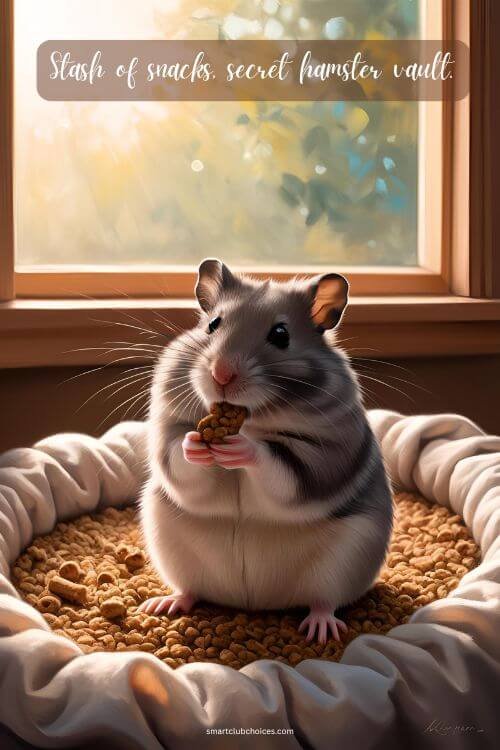Hamster Care 101: Keeping Your Furry Friend Happy
Small, Furry, and Full of Fun
Hamsters might be tiny, but they bring huge amounts of joy. These little furballs are packed with energy, personality, and a knack for stuffing their cheeks like it’s an Olympic sport.
But while they may seem like easy pets, hamsters do require proper care to keep them happy and healthy.
If you’re thinking about adopting one of these adorable critters, here’s everything you need to know about taking care of a hamster.
Table of Contents
(1) Creating the Perfect Hamster Habitat
A hamster’s cage isn’t just a home—it’s their entire world. Setting up the right environment is key to their happiness.
- Choose the Right Cage: A spacious cage with plenty of ventilation is essential. Avoid tiny plastic enclosures—hamsters need room to explore!
- Bedding & Nesting: Use soft, absorbent bedding like paper-based materials. Avoid cedar or pine shavings, as they can harm their respiratory system.
- Hideouts & Tunnels: Hamsters love cozy spaces and mazes. Provide hideouts, tunnels, and tubes for them to scurry through.
- Exercise Wheel: A must-have! Hamsters run miles each night, so a solid, quiet exercise wheel is essential.
- Water & Food Dish: A water bottle with a spout works best, and a small, sturdy food dish prevents spills.

(2) Hamster Nutrition: What’s on the Menu?
A proper diet keeps your hamster healthy, energetic, and ready to explore.
- Hamster Pellets: A good-quality commercial hamster mix should be their primary food source.
- Fresh Veggies & Fruits: Carrots, cucumbers, and apples are great treats—but avoid citrus and onions!
- Protein Boost: Offer occasional treats like boiled egg, mealworms, or unsalted nuts.
- Chew Toys & Snacks: Hamsters’ teeth never stop growing, so wooden chew toys and safe treats help keep them filed down.
- Avoid Junk Food: No sugary snacks, salty foods, or dairy products—hamsters have sensitive stomachs.
(3) Keeping Your Hamster Healthy & Happy
A healthy hamster is an active, curious, and playful one. Here’s how to keep them in top shape:
- Check for Signs of Illness: Lethargy, bald patches, or wet tail (a serious bacterial infection) require immediate vet attention.
- Keep Their Cage Clean: Spot-clean daily and do a full bedding change once a week to prevent odors and bacteria buildup.
- Temperature Matters: Keep their cage in a quiet, warm room—hamsters don’t like extreme temperatures.
- Gentle Handling: Let your hamster get used to you before attempting to pick them up. Start by offering treats from your hand.
- Regular Playtime: Allow them to explore outside their cage in a safe, enclosed space with supervision.
(4) Understanding Hamster Behavior
Hamsters have some quirky habits that make them endlessly entertaining.
- Nocturnal Nature: Hamsters are most active at night, so don’t expect much action during the day.
- Cheek-Stuffing Experts: They hoard food in their cheeks and stash it around their cage like tiny treasure hunters.
- Curious but Shy: Some hamsters are social, while others take time to warm up. Respect their personality and give them space if needed.
- Escape Artists: Hamsters are notorious for squeezing through tiny gaps—always secure their cage properly!
- Solo or Social? Syrian hamsters must live alone, while dwarf hamsters can sometimes cohabitate with others of their kind.

(5) Conclusion: The Perfect Pint-Sized Pet
Hamsters are fun, lovable, and surprisingly full of personality. With the right care, a well-set-up habitat, and plenty of love, your hamster will thrive as your tiny, furry companion.
If you’re ready for late-night zoomies, adorable cheek-stuffing antics, and a pocket-sized pal, a hamster might just be the perfect pet for you!








